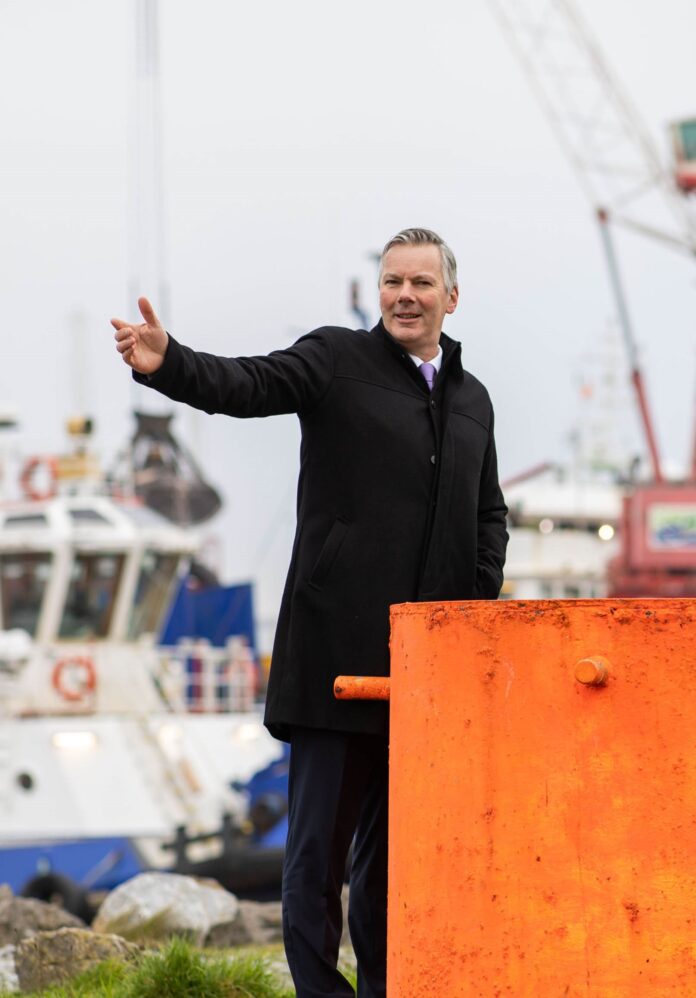
SHANNON Foynes Port Company Chief Executive Pat Keating has said that the regeneration of the Limerick to Foynes rail line is one of two transport links essential for delivering on the unprecedented opportunity for the estuary as a global floating offshore wind energy and transhipment hub.
Welcoming the recent opening of an ‘expression of interest’ tender for works on the 42km line, Mr Keating said that the rail link will be of great benefit to the wider project, but even more essential is the road link to Foynes.
“The expression of interest tender is a very significant moment within our wider plans to capitalise on the unprecedented opportunity for the Shannon Estuary as it gives even greater certainty that this important rail connectivity is going to happen. This is a strategic move that will enhance connectivity to Foynes port but also help to decarbonise the supply chain by transferring significant cargo tonnages from road to rail.
“However, the primary access to and from Foynes will still be road and it’s essential that the Foynes to Limerick road goes ahead as soon as possible. It will carry by far the majority of goods to and from Foynes, goods and materials that rail cannot accommodate. So, while we are delighted with announcement regarding the reinstatement of rail, we look forward to an early commitment, too, on the Foynes to Limerick road,” he said.
Mr Keating continued: “We appreciate the expediency regarding the rail reinstatement but it is essential, too, that we get moving on addressing our road infrastructure. Shannon Foynes is a Core Corridor Port under the EU’s Ten-t Regulations. These regulations require that upgraded hinterland connections, ie road and rail, are in place by 2030.
“In addition, the Shannon Estuary can become an international floating offshore wind and related green fuels generation hub, but our current road network links are an impediment to that. We must move quickly, however, as time is not on our side when it comes to energy security and climate change. The Estuary can be an enabler for addressing those critical issues for not just Ireland but Europe, with transformative economic as well as environmental impact, but it won’t happen without the necessary infrastructure,” he added.
Mr Keating added that the rail project is also very much endorsed at European level.
“In 2015 we secured €800,000 from the EU’s Connecting Europe Facility for a Feasibility and Detailed Design study, including all associated consenting requirements, for the regeneration of the rail link in 2015. Those works were completed in 2019 and were part funded also by Shannon Foynes Port Company and undertaken by Irish Rail. As a result, the reinstatement of the 40km Limerick to Foynes line is now shovel ready so moving to this next ‘expressions of interest’ stage to realise this opportunity is a key moment,” he concluded.
Advertisement








